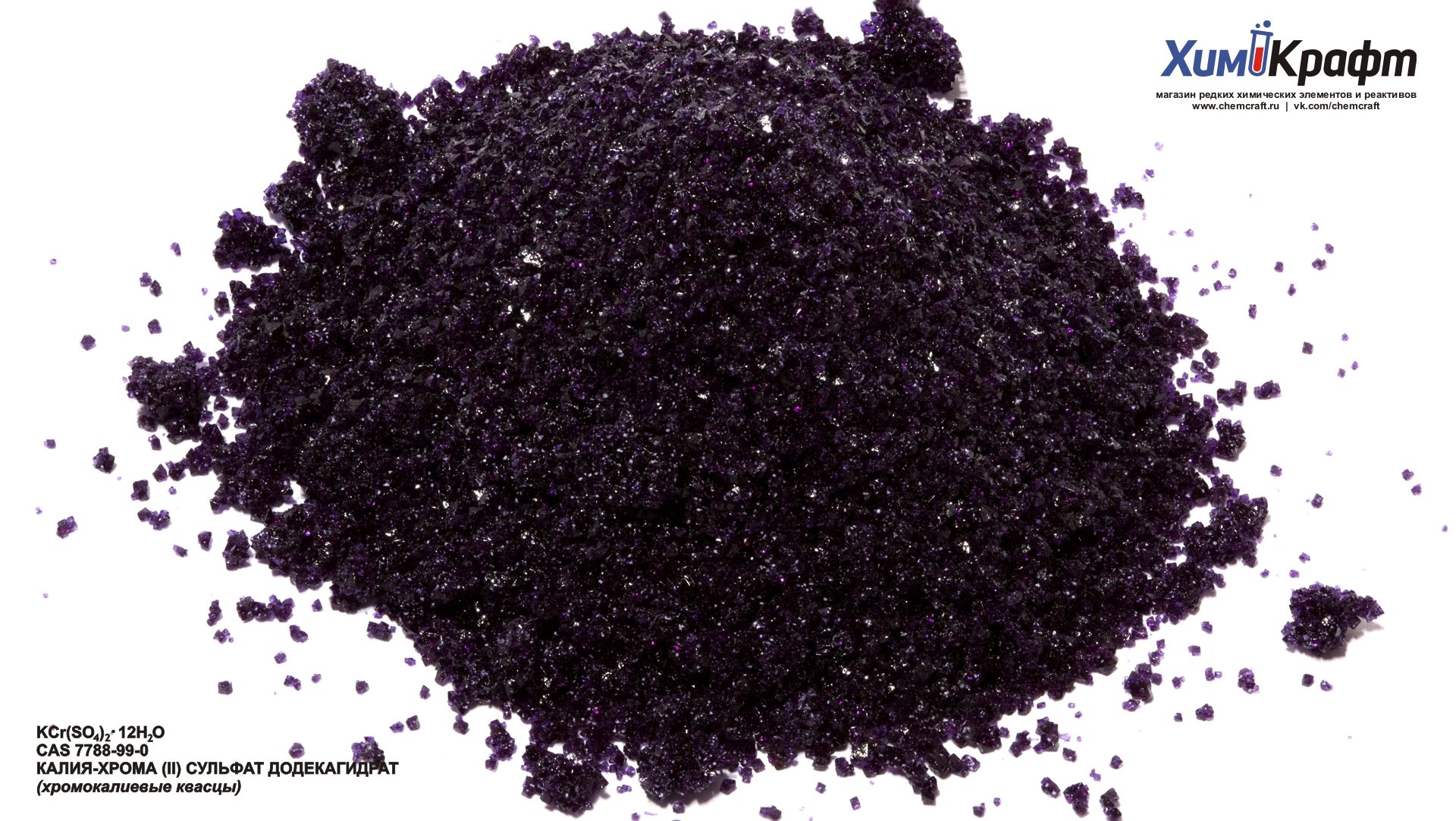
the most common way is to form chromium sulfate by the reaction of potassium dichromate and hydrogen sulfide. Cr2O3 3 H2SO4 Cr2(SO4)3 3 H2O chromium sulfate can also be prepared by the reduction reaction of dichromate. 1 Solubility data for compounds that ordinarily are liquids at 25 are expressed in terms of the ratio of the. Chromium sulfate hydrate can be made by reacting trivalent chromium oxide, such as chromium trioxide and sulfuric acid. Potassium Benzoate: 2: 75: alcohol solution (9 in 10), 50: Potassium Chloride: 2.8: 2: Potassium Citrate: 1: glycerin, 2.5. It was also used in gelatine emulsions in photographic film as hardener. Aluminum Sulfate: 1: Amantadine Hydrochloride: 2.5: 5.1: 18: polyethylene glycol 400, 70: Amaranth: 15. However, this application is obsolete because the simpler chromium(III) sulfate is preferred. Uses Ĭhromium alum is used in the tanning of leather as chromium(III) stabilizes the leather by cross linking the collagen fibers within the leather. In addition to the dodecahydrate, the hexahydrate KCr(SO 4) 2♶H 2O, dihydrate KCr(SO 4) 2♲H 2O, and the monohydrate KCr(SO 4) 2 Potassium chromate compound is a powerful oxidizing agent and is extremely corrosive. And, the most common oxidation state of chromium is +2, +3, +6, and the electronic configuration of chromium is given as 3d 5 4s 1 with the atomic number is 24. It is also a blue-gray solid that dissolves in water. Potassium chromate is produced by treating potassium dichromate, including potassium hydroxide. The formula for chromium (III) sulfate is Cr 2 (SO 4) 3. Potassium: chromluan sulfate :(gcarrying 12320.) wa szdiss lved in: a. Aqueous solutions are dark violet and turns green when it is heated above 50 ☌. Chromium (III) sulfate Chromium (sulfate III) is an inorganic compound with a ratio of chromium to sulfate of 2: 3. Crystalline ammonium chromium sulfate (carrying 12H2O) was added to an equal. The solution reddens litmus and is an astringent. Chromium alum crystallizes in regular octahedra with flattened corners and is very soluble in water. Organic solvents, No data, Soluble in ethanol, ethyl ether, sulfuric and nitric acids. Basic potassium permanganate will oxidize alcohol to acetic acid. Acidified potassium dichromate will reduce to chromium sulfate. Acidified potassium permanganate will oxidize alcohol to acetic acid. Alternatively and less commonly, ferrochromium alloys can be dissolved in sulfuric acid and, after precipitation of the ferrous sulfate, the chrome alum crystallizes upon addition of potassium sulfate. Creates substances that are more water soluble than the parent drug. Concentrated aqueous solutions of potassium dichromate can be reduced, usually with sulfur dioxide but also with alcohols or formaldehyde, in the presence of sulfuric acid at temperatures <40 ☌. Production and properties Chrome alumĬhromium alum is produced from chromate salts or from ferrochromium alloys.

Its chemical formula is KCr(SO 4) 2 and it is commonly found in its dodecahydrate form as KCr(SO 4) 2♱2(H 2O). g H 2O, must be used as a conversion factor to calculate the maximum amount of solute, ammonium iodide, NH 4I, that can dissolve in the given amount of solvent, 75.0 grams of water, H 2O.Chrome alum or Chromium(III) potassium sulfate is the potassium double sulfate of chromium. In order to determine whether this solution is saturated or unsaturated, the solubility of ammonium iodide, NH 4I, which has a reported value of 172 g/100. Since the chemical formula for water, H 2O, is associated with the 100.-gram quantities in the denominators of the solubilities in Table 7.9.1, water, H 2O, is the solvent in this solution, and the remaining substance, ammonium iodide, NH 4I, is the solute, "by default." Use the solubility information that is presented in Table 7.9.1 to determine whether the resultant solution is saturated or unsaturated, and calculate the amount of excess solute that remains undissolved in this solution.īefore a solubility limit can be applied as a conversion factor, each substance that is referenced in the given problem must first be classified as a solute or a solvent. \)Ī solution is prepared by mixing 129 grams of ammonium iodide and 75.0 grams of water at 20 degrees Celsius.


 0 kommentar(er)
0 kommentar(er)
